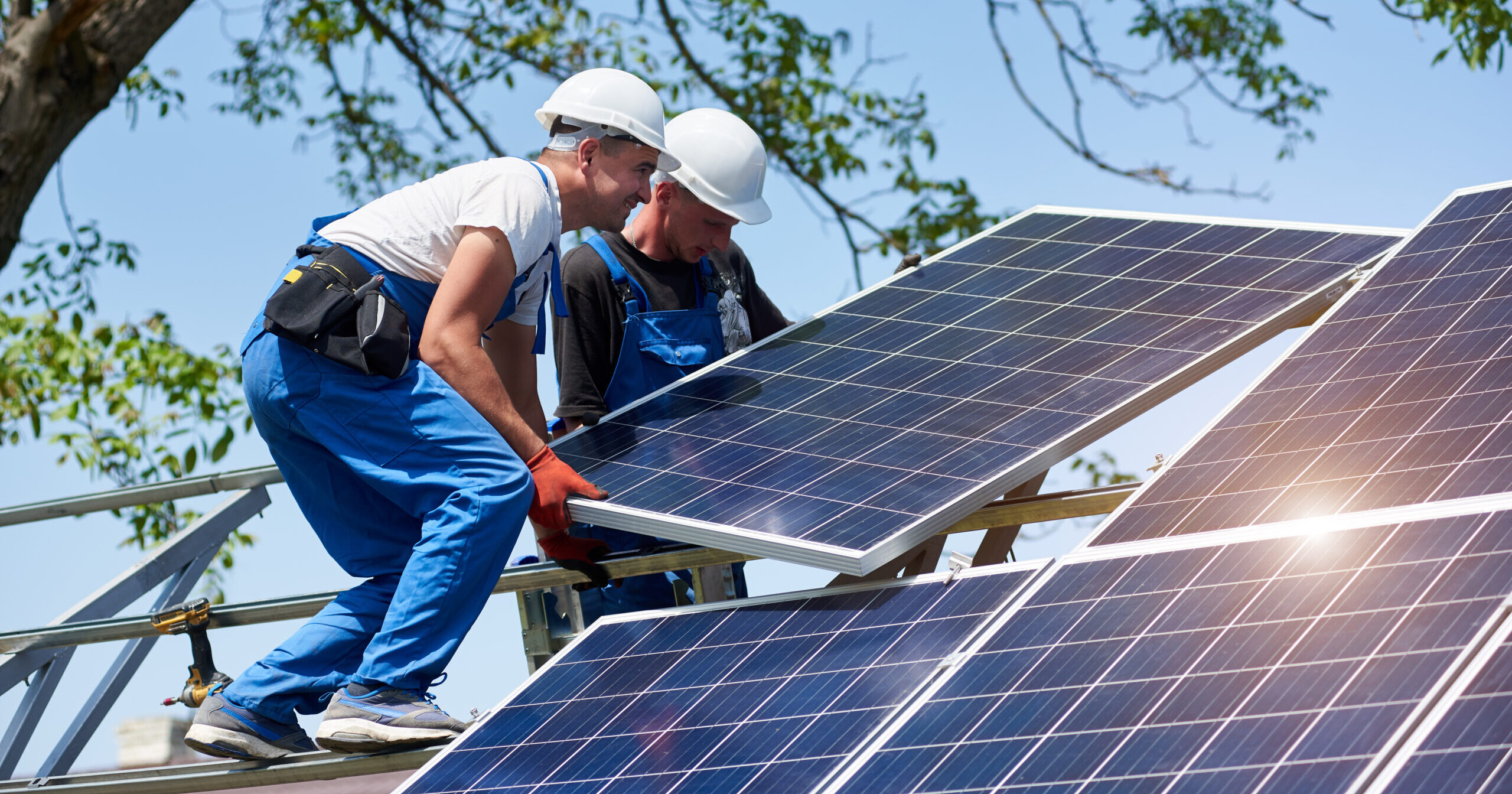Can data centers run on 100% renewable energy? The UN thinks so – Straight Arrow News

Report on Data Center Energy Consumption and the Sustainable Development Goals
Executive Summary
A call to action from the United Nations Secretary-General has highlighted the urgent need for the technology sector to align its rapid growth with the 2030 Agenda for Sustainable Development. The escalating energy demands of Artificial Intelligence (AI) and data centers present a significant challenge to achieving Sustainable Development Goal 7 (Affordable and Clean Energy) and SDG 13 (Climate Action). This report analyzes the current energy landscape for data centers, the economic viability of renewable energy sources, and the corporate strategies being employed, framing them within the context of the SDGs.
The Challenge to Sustainable Infrastructure and Consumption
The proliferation of AI is driving an unprecedented increase in energy consumption by data centers, posing a direct challenge to sustainable industrialization and responsible consumption patterns as outlined in SDG 9 (Industry, Innovation, and Infrastructure) and SDG 12 (Responsible Consumption and Production).
- United Nations Secretary-General António Guterres has urged Big Tech to power data centers with 100% renewable energy by 2030.
- Projections indicate that within five years, the electricity required by data centers could equal the total consumption of Japan, an unsustainable trajectory without a fundamental shift in energy sourcing.
- This growth tests the progress of the global energy transition, requiring significant advancements in grid management and clean power generation to support resilient infrastructure (SDG 9).
Economic Feasibility of Clean Energy Solutions (SDG 7)
Recent data confirms that transitioning to renewable energy is not only environmentally necessary but also economically advantageous, directly supporting the targets of SDG 7 (Affordable and Clean Energy).
Cost-Competitiveness of Renewables
A report from the International Renewable Energy Agency (IRENA), based on over 25,000 projects, provides compelling evidence of the financial viability of clean energy.
- Cost Advantage: In 2024, 91% of newly commissioned utility-scale renewable capacity generated electricity at a lower cost than the cheapest new fossil fuel alternatives.
- Installation Cost Reduction (since 2010):
- Utility-scale solar power: 87% decrease
- Onshore wind power: 55% decrease
- Offshore wind power: 48% decrease
- Levelized Cost of Electricity (LCOE): The LCOE for solar has fallen 90% to 4.3 cents/kWh, and onshore wind has dropped 70% to 3.4 cents/kWh. These figures are approximately 40-60% lower than new combined-cycle gas (8.5 cents/kWh) and coal (7.3 cents/kWh) plants.
Technical Considerations for Grid Stability
While LCOE figures are favorable, experts note they do not fully account for the intermittent nature of some renewables. Achieving the reliability required by data centers necessitates further innovation in energy storage and dispatchable clean power sources to ensure stable and sustainable infrastructure (SDG 9).
The Pursuit of Clean, Firm Power for Sustainable Industry
Data centers require continuous, reliable power, a need described as “clean, firm power.” Meeting this demand sustainably is critical for the future of digital infrastructure and achieving SDG 9.
- Critical Power Sources: Experts emphasize the importance of consistent power from sources like nuclear, geothermal, hydrogen, and natural gas equipped with carbon capture technology.
- Data Centers as Grid Assets: A proposed strategy involves making data centers more “flexible,” enabling them to reduce their electricity draw during peak demand. This would transform them into assets that enhance grid reliability and support the integration of more renewable sources, contributing to SDG 11 (Sustainable Cities and Communities).
Corporate Action and Partnerships for the Goals (SDG 17)
Major technology companies have established clean energy targets, but their implementation strategies are evolving. The formation of multi-stakeholder partnerships is proving essential, reflecting the spirit of SDG 17 (Partnerships for the Goals).
Corporate Commitments and Strategies
- Companies including Google, Microsoft, Amazon, Apple, and Meta have committed to powering operations with renewable energy or achieving net-zero emissions around 2030.
- Many commitments currently rely on the purchase of renewable energy credits to offset fossil fuel consumption.
- However, a shift towards direct procurement is underway, with recent partnerships demonstrating a commitment to securing dedicated clean power sources:
- Google: Deal to purchase hydroelectricity.
- Meta: Agreement to buy nuclear power to support AI data centers.
- Microsoft: Partnership to construct solar power facilities in 20 U.S. communities.
These strategic partnerships between technology firms and energy producers are crucial for accelerating the transition and ensuring that the growth of the digital economy contributes positively to the global Sustainable Development Goals.
1. Which SDGs are addressed or connected to the issues highlighted in the article?
The article primarily addresses issues related to the following Sustainable Development Goals (SDGs):
-
SDG 7: Affordable and Clean Energy
This is the central theme of the article. The discussion revolves around the urgent need for data centers, particularly those powering AI, to transition to renewable energy sources. It highlights the UN Secretary-General’s call for Big Tech to “run data centers on 100% renewable energy by 2030.” The article extensively covers the cost-competitiveness, development, and adoption of clean energy technologies like solar, wind, geothermal, and nuclear power in contrast to fossil fuels like coal and gas.
-
SDG 9: Industry, Innovation, and Infrastructure
The article focuses on a key modern industry (Big Tech) and its infrastructure (data centers). The push to power these facilities with clean energy represents an effort to “upgrade infrastructure and retrofit industries to make them sustainable.” The development of AI is presented as an innovation that is “energy-hungry,” thus driving the need for innovation in energy systems and grid management to support it sustainably.
-
SDG 13: Climate Action
The underlying motivation for transitioning from coal and gas to renewable energy is to combat climate change. The article implicitly connects the massive energy consumption of data centers to potential climate impacts if that energy is not sourced cleanly. The mention of “gas with carbon capture technology to stop emissions from reaching the atmosphere” is a direct reference to a climate action strategy.
-
SDG 12: Responsible Consumption and Production
The article highlights the unsustainable consumption patterns of the tech industry. It notes that the energy needs from data centers are expected to “skyrocket and consume as much electricity as Japan,” which Guterres states is “not sustainable.” The call for a shift to renewables and the corporate commitments to net-zero emissions are efforts to establish more responsible and sustainable patterns of energy consumption and production.
2. What specific targets under those SDGs can be identified based on the article’s content?
Based on the article’s content, the following specific SDG targets can be identified:
-
Target 7.2: Increase substantially the share of renewable energy in the global energy mix.
This target is directly addressed by the UN Secretary-General’s plea for Big Tech to “run data centers on 100% renewable energy by 2030.” The entire article discusses the feasibility, cost, and necessity of increasing the share of renewables (solar, wind, geothermal) to power the growing AI industry.
-
Target 7.a: Enhance international cooperation to facilitate access to clean energy research and technology… and promote investment in energy infrastructure and clean energy technology.
The article mentions numerous examples of this, including “Big Tech companies are forming partnerships with energy companies.” Specific examples cited are Google’s deal for hydroelectricity, Meta’s purchase of nuclear power, and Microsoft’s partnership to build solar power, all of which represent investments in clean energy infrastructure and technology.
-
Target 9.4: Upgrade infrastructure and retrofit industries to make them sustainable, with increased resource-use efficiency and greater adoption of clean and environmentally sound technologies.
The core issue of retrofitting the tech industry’s infrastructure—data centers—to run on clean energy aligns perfectly with this target. The discussion about making data centers more “flexible” to become a “grid asset” is also an example of upgrading infrastructure for greater efficiency and sustainability.
-
Target 13.2: Integrate climate change measures into national policies, strategies and planning.
While the article focuses more on corporate and international strategy than national policy, the commitments by “Google, Microsoft, Amazon, Apple and Meta… to powering their operations with renewable energy, or achieving net-zero emissions around 2030” represent the integration of climate change measures into their core business strategies, which is in the spirit of this target.
3. Are there any indicators mentioned or implied in the article that can be used to measure progress towards the identified targets?
Yes, the article mentions several quantitative and qualitative indicators that can be used to measure progress:
-
Share of renewable energy in the energy mix (Indicator 7.2.1)
The goal of “100% renewable energy by 2030” for data centers is a clear indicator. The finding that “91% of newly commissioned utility-scale renewable capacity in 2024 delivered electricity at a lower cost” than fossil fuels serves as an indicator of the rapid growth and viability of renewables.
-
Cost-competitiveness of renewable energy
The article provides specific financial data points that act as indicators of the increasing affordability of clean energy. These include:
- “Installation costs for utility-scale solar power are down 87% since 2010.”
- “Onshore and offshore wind installation costs dropped 55% and 48% over the same period.”
- The levelized cost of electricity (LCOE) for solar (4.3 cents/kWh) and wind (3.4 cents/kWh) compared to gas (8.5 cents/kWh) and coal (7.3 cents/kWh).
-
Investment in clean energy
The partnerships and deals made by Big Tech are qualitative indicators of investment. Examples include “Google made a deal to purchase hydroelectricity,” “Meta arranged to buy nuclear power,” and “Microsoft announced a partnership to build solar power.” The scale and frequency of such deals can measure progress.
-
Total energy consumption of data centers
The projection that data centers will “consume as much electricity as Japan” is an indicator of the scale of the challenge. Tracking this consumption against the share of renewables used to power it would measure progress towards sustainable consumption (SDG 12).
-
Corporate commitments and goals
The existence of corporate goals, such as achieving “net-zero emissions around 2030,” serves as a qualitative indicator of intent and strategic alignment with climate action (SDG 13). Progress can be measured by how well these companies adhere to their stated timelines and objectives.
4. Table of SDGs, Targets, and Indicators
| SDGs | Targets | Indicators |
|---|---|---|
| SDG 7: Affordable and Clean Energy | 7.2: Increase substantially the share of renewable energy in the global energy mix.
7.a: Promote investment in energy infrastructure and clean energy technology. |
|
| SDG 9: Industry, Innovation, and Infrastructure | 9.4: Upgrade infrastructure and retrofit industries to make them sustainable… with greater adoption of clean and environmentally sound technologies. |
|
| SDG 12: Responsible Consumption and Production | 12.2: By 2030, achieve the sustainable management and efficient use of natural resources. |
|
| SDG 13: Climate Action | 13.2: Integrate climate change measures into… strategies and planning. |
|
Source: san.com

What is Your Reaction?
 Like
0
Like
0
 Dislike
0
Dislike
0
 Love
0
Love
0
 Funny
0
Funny
0
 Angry
0
Angry
0
 Sad
0
Sad
0
 Wow
0
Wow
0













































































